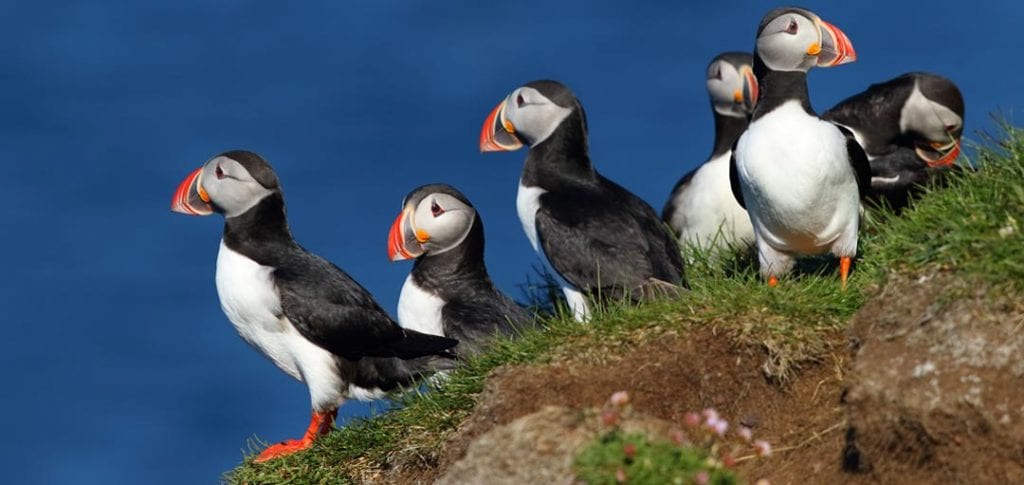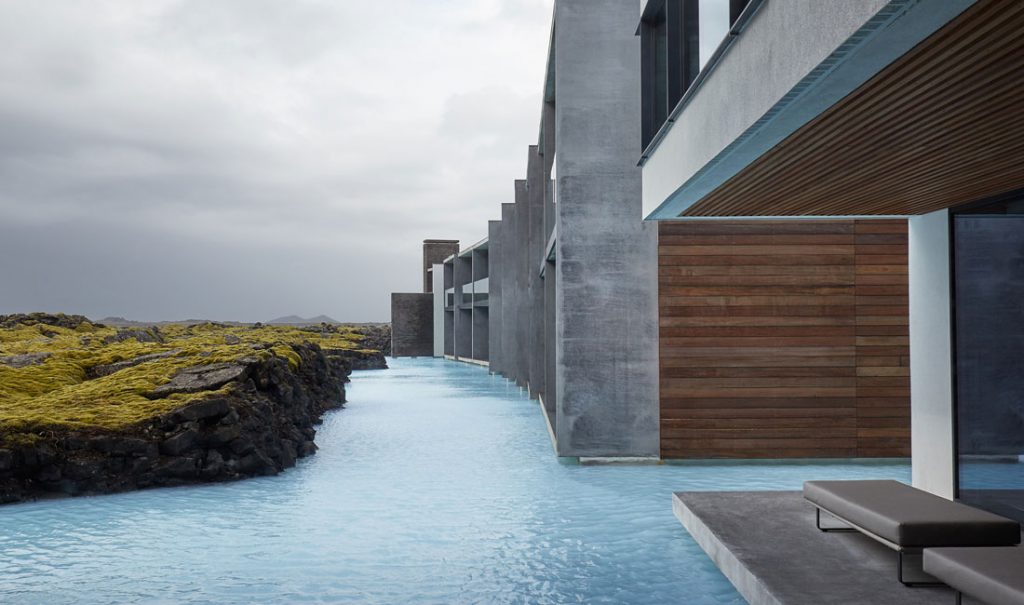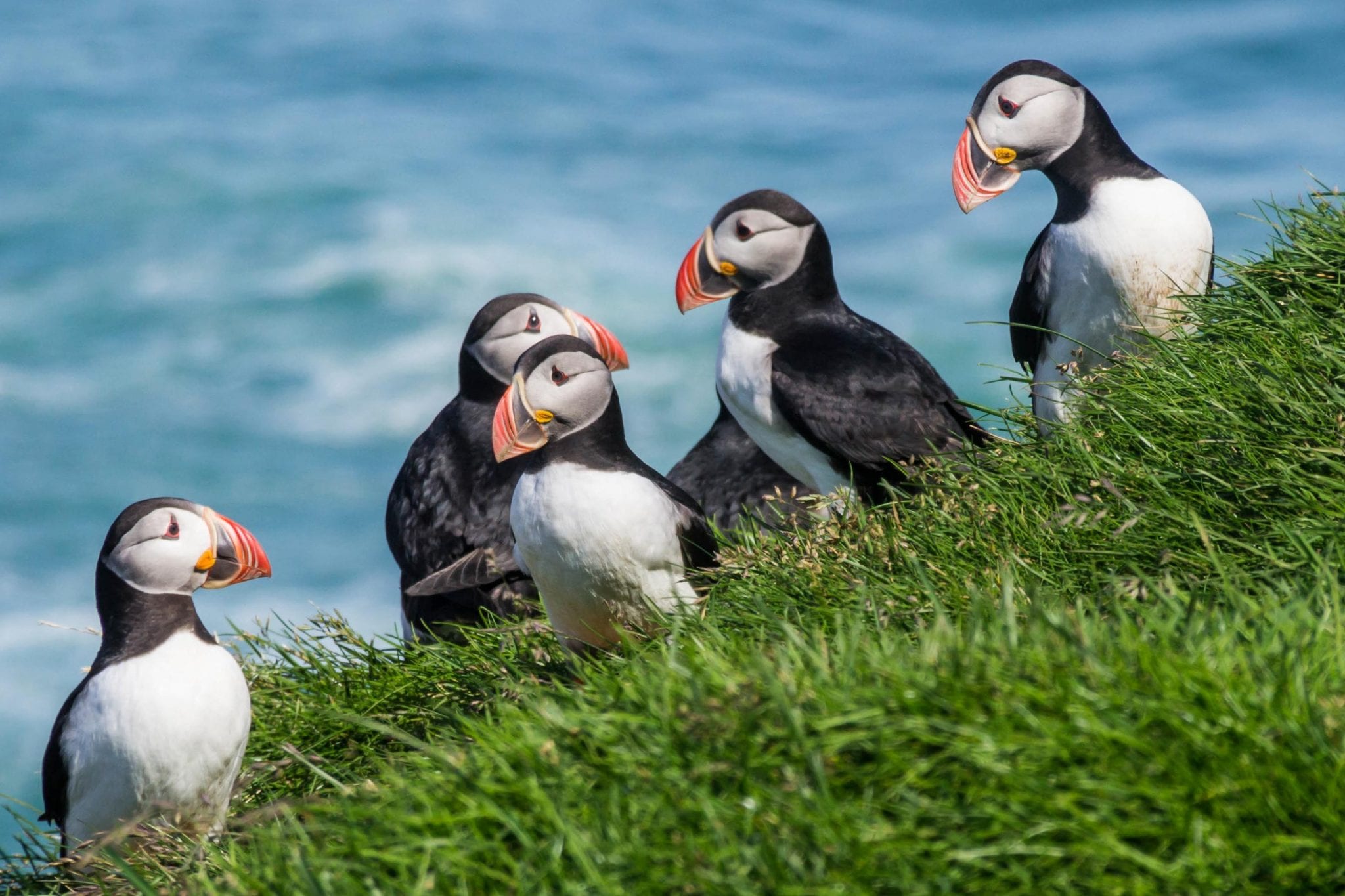Iceland is home to some of the most enchanting natural landscapes on Earth—but for wildlife lovers, one of its most beloved treasures comes in a smaller, feathered form: the puffin. These charming, colorful seabirds draw thousands of visitors each year, and for good reason. With their comical expressions, bright orange beaks, and graceful dives, puffins offer an unforgettable experience for nature enthusiasts and photographers alike.
But while many tourists settle for distant glimpses from crowded cliffs, there’s a more luxurious, intimate way to encounter these birds. In this guide, we’ll explore how to experience puffins in Iceland through private tours, hidden viewing spots, and VIP accommodations that blend wildlife encounters with upscale travel.
When is Puffin Season in Iceland?
The best time to see puffins in Iceland is from early May to mid-August, when over 60% of the world’s Atlantic puffin population returns to nest on the island’s rugged coastline. During this nesting season, Iceland becomes a hotspot for birdwatchers and photographers hoping to witness puffins in their natural habitat.
The most active periods for puffin sightings are typically in the mornings and evenings, when adult puffins fly in and out of their burrows to feed their chicks. Planning your trip around these hours can increase your chances of witnessing their high-speed landings and takeoffs—a truly entertaining spectacle.
Remote Puffin Colonies & Where to Find Them
While many visitors head to popular spots like Dyrhólaey or Látrabjarg, Iceland is dotted with remote puffin colonies that offer a far more tranquil and private experience. Some of the best hidden locations include:
-
Borgarfjörður Eystri (East Iceland): A favorite among puffin enthusiasts, this remote village offers an easily accessible platform to view thousands of puffins up close. It’s also less crowded than better-known spots and features dramatic coastal scenery.
-
Ingólfshöfði Cape (South Iceland): This isolated cape requires a tractor-pulled hay cart ride across black sand and wetlands, followed by a hike. The reward? Secluded puffin viewing with panoramic views of glaciers and the ocean.
-
Papey Island: Off the coast of East Iceland, this uninhabited island is home to thousands of puffins, seals, and arctic terns. Reachable only by private boat tour, it offers a true off-the-grid puffin experience.
By partnering with local guides and booking private excursions, you can avoid the crowds and experience puffins in their most undisturbed environments.

Private Puffin Tours & Luxury Add-Ons
For travelers who prefer exclusivity and personalized service, private puffin tours are the way to go. These tours can be customized to your interests and comfort level, with options like:
-
Private Zodiac boat tours from Reykjavik or Akureyri, navigating along puffin-inhabited cliffs with expert guides.
-
Luxury yacht cruises around the Westman Islands, which host one of Iceland’s largest puffin colonies.
-
Helicopter flights over coastal regions, combined with gourmet picnics and guided landings near nesting areas.
Many high-end operators also offer combo packages that include whale watching, sea angling, or Northern Lights hunts. You can even pair your puffin tour with a stay at a luxury lodge, complete with private saunas, hot tubs, and chef-prepared Icelandic cuisine.
Whether you’re traveling as a couple, family, or small group, these private tours create a truly unforgettable wildlife experience—without sacrificing comfort or exclusivity.
Where to Stay: Luxury Accommodations Near Puffin Hotspots
Pair your puffin adventure with a stay at some of Iceland’s finest lodges, eco-hotels, and boutique guesthouses:
-
Fosshotel Eastfjords (near Borgarfjörður Eystri): A renovated historic hospital turned chic hotel with fjord views and puffin colonies nearby.
-
Hotel Rangá (South Coast): Offers private stargazing, fine dining, and easy access to Ingólfshöfði and Dyrhólaey puffin cliffs.
-
Luxury Wilderness Cabins in the Westfjords: These remote cabins provide cozy isolation near Látrabjarg, ideal for witnessing puffins and sea eagles in solitude.
-
The Retreat at Blue Lagoon: Though not near puffins, many VIP travelers base themselves here and take private transfers to puffin-viewing zones.
From luxury tents with panoramic ocean views to high-end hotels with geothermal spas, Iceland offers no shortage of comfort even in the most remote areas.

Tips for Ethical Puffin Watching
Luxury doesn’t mean losing sight of sustainability. Puffins are sensitive to human interference, so practicing ethical wildlife tourism is essential.
Here’s how to ensure your puffin experience is respectful and responsible:
-
Keep a safe distance from nesting burrows and avoid touching the birds.
-
Book with ethical tour companies that follow wildlife preservation guidelines.
-
Stick to marked trails to avoid trampling fragile cliffside vegetation.
-
Avoid flash photography that can startle birds or disorient them.
By choosing small group or private tours with eco-conscious providers, you not only protect the puffins but also contribute to the preservation of their natural habitats.
The Puffin Experience Beyond Photos
While the photographs of puffins mid-flight or peeking out of their burrows are priceless, the real reward lies in the connection to Iceland’s raw, untouched nature.
There’s something profoundly grounding about sitting in silence, listening to the crash of waves below a puffin-covered cliff, far from any city or sound. It’s a sensory encounter that touches every part of your being—from the sea spray on your face to the laughter stirred by the puffins’ clumsy landings.
Add in a glass of sparkling wine and a private guide who knows the land like the back of their hand, and you have the kind of travel moment that stays with you long after the journey ends.
Puffin Fun Facts: What Makes These Birds So Special?
To deepen your appreciation during a puffin-watching trip, it helps to understand just how fascinating these seabirds truly are:
-
Deep divers: Puffins can dive up to 60 meters (nearly 200 feet) below the surface to catch small fish like sand eels, herring, and capelin.
-
Monogamous mates: Puffins are loyal creatures, often returning to the same burrow year after year with the same partner.
-
Expert builders: Their nests are burrows dug into grassy cliffs, often as deep as three feet, lined with feathers and grass.
-
Fast flyers: Though they may appear clumsy on land, puffins flap their wings up to 400 times per minute and can reach speeds over 80 km/h (50 mph) in the air.
These charming quirks make puffins not only entertaining to watch but also deeply inspiring to those who value wildlife and natural beauty.
Pairing Puffin Tours with Icelandic Cuisine
An often-overlooked luxury during puffin season is the opportunity to enjoy fine Icelandic cuisine near the coast. Some luxury tour providers offer full-day experiences that combine puffin sightseeing with gourmet meals, including:
-
Seaside seafood dinners in Stykkishólmur or Seyðisfjörður.
-
Chef-led foraging expeditions followed by cooking classes using wild herbs, seaweed, and Arctic char.
-
Geothermal bread baking experiences, where you bury dough in hot black sand near Lake Mývatn while watching seabirds.
These culinary pairings can turn a puffin-watching day into a full-blown luxury escape, celebrating the rich flavors of Iceland alongside its wildlife.

Puffins and Photography: How to Capture the Perfect Shot
If you’re bringing a camera, puffin watching offers incredible photography opportunities—especially in the golden hours of Iceland’s long summer days. A few pro tips:
-
Use a telephoto lens (200mm or higher) to capture close-ups without disturbing the birds.
-
Bring a tripod for stability, particularly in windy cliffside locations.
-
Focus on puffin behaviors like mid-air flight, beak tapping (a bonding ritual), and feeding chicks—these moments make for memorable shots.
-
Avoid flash and stick to natural light to maintain ethical practices.
Some luxury tours even include professional photographers who will guide you on location and help you get the best images.
Planning Ahead: Logistics for Puffin Trips
Luxury puffin experiences often require early planning, especially in high season. Here’s what to keep in mind:
-
Book private tours at least 2–3 months in advance, especially for late June and July.
-
Weather can be unpredictable, so flexibility in scheduling is key. Many luxury providers build in alternate viewing windows.
-
Bring layered clothing, waterproof boots, and a windbreaker—even in summer.
-
English-speaking local guides are standard with luxury experiences, and many also speak German, French, or Scandinavian languages.
Working with bespoke Icelandic travel planners like Deluxe Iceland ensures that every logistical detail—from transfers to tour timing—is handled with care.
FAQs About Puffins in Iceland
Q: When is the best time to see puffins in Iceland?
A: Puffins are most commonly seen from May to mid-August, with peak activity in June and July.
Q: Where are the best hidden puffin spots in Iceland?
A: Borgarfjörður Eystri, Ingólfshöfði, and Papey Island are some of the most secluded and spectacular puffin-viewing areas.
Q: Can I see puffins from Reykjavik?
A: Yes, boat tours depart from Reykjavik harbor to islands like Akurey and Lundey, both known for puffin sightings.
Q: Are private puffin tours expensive?
A: Prices vary, but private tours can range from $300 to $2000 USD, depending on the mode of transport and duration.
Q: Is it safe to walk near puffin colonies?
A: It is safe as long as you follow marked paths and avoid disturbing burrows or nesting areas.
Q: Do puffins migrate?
A: Yes. Puffins spend most of the year at sea and return to Iceland’s shores only during the nesting season.
